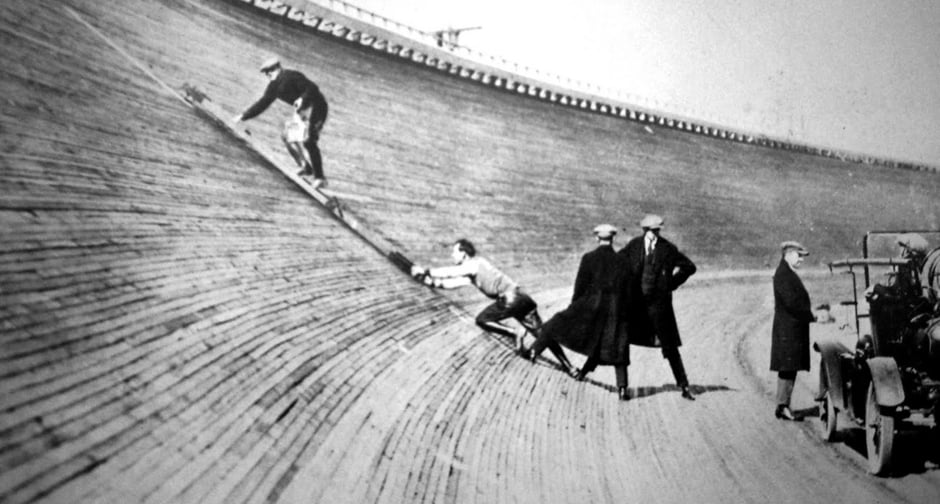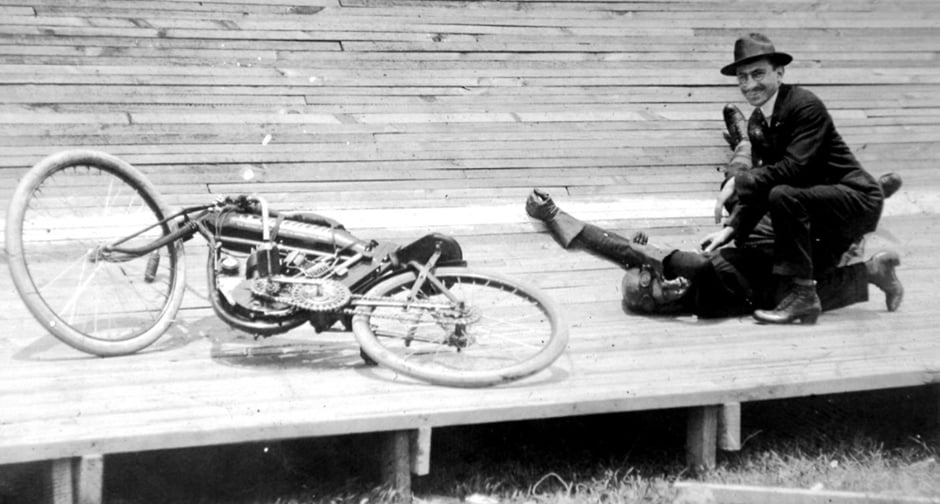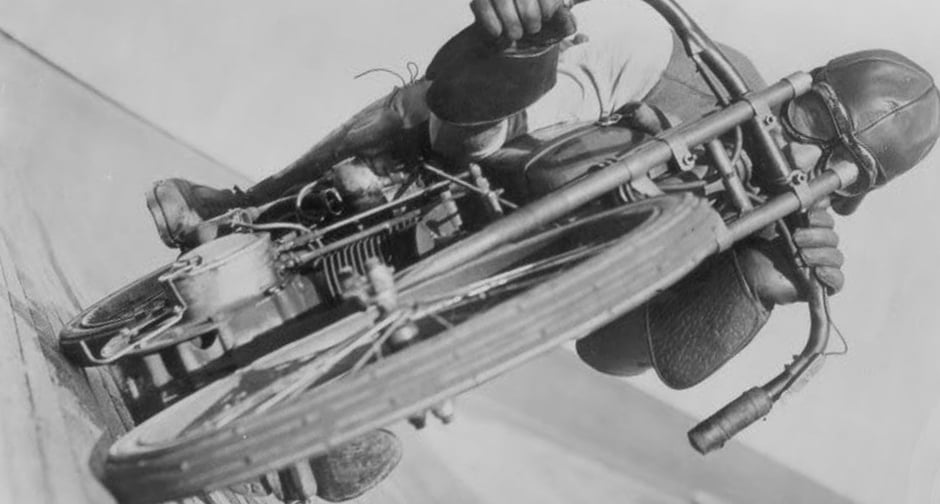It all started in 1910 when motorcycles were beginning to get interestingly quick. Daredevil riders had already been racing them on dirt roads, but it took some entrepreneurial thinking to realise that money was to be made by confining competition to an arena and charging people to see the action – and so it was that the first board track circuit was opened in Playa del Ray, California.
Wood was cheap, and there was plenty of it, so it made sense to construct the L.A. Motordrome from thousands of lengths of two-inch boarding. Based on French-style cycle velodromes, the track had a 25-degree banking at either end, enabling riders to hang off their throttle cables for as long as they could maintain control of their brakeless machines, on a surface made slick by shredded rubber and oil dropped from engines running 'total loss' lubrication.

The fact that the tracks could be built quickly enabled them to satisfy America's fast-growing enthusiasm for motor sport and, at board track's peak, crowds of tens of thousands flocked to watch the racers touching 100mph at 30-plus circuits across the country.
The top riders were paid up to $20,000 per year – but they certainly earned their money. Although crashes were frequent, riding gear usually consisted of nothing more sophisticated than goggles, flat caps, leather gloves and woollen sweaters which did little to save the skin of the competitors when they lost control of machines which rejoiced in names such as Pope, Indian and The Flying Merkel.

Indeed, such was the level of casualties that critics of board track referred to the circuits as 'murderdromes' – not least after a legendary racer called Eddie Hasha (aka the Texas Cyclone) went over the top of the banking during a race near Atlantic City back in 1912. He died outright and his four-valve Indian went spiralling into the crowd, killing three young boys and a man, and injuring 10 other spectators.
In a more bizarre incident in Ludlow, Kentucky, top racer Odin Johnson's crashed machine triggered a wide-scale tragedy when it hit a lamp post which burst its fuel tank. An exposed electrical wire ignited the contents, causing an inferno which killed eight spectators.

Johnson's widow subsequently devoted years of her life to having board track banned. In the event, she perhaps shouldn't have bothered – by the early 1920s the sport was already losing popularity and was fully finished off by the arrival of the Great Depression a few years later.
But it was good while it lasted – in a frightening kind of way...











